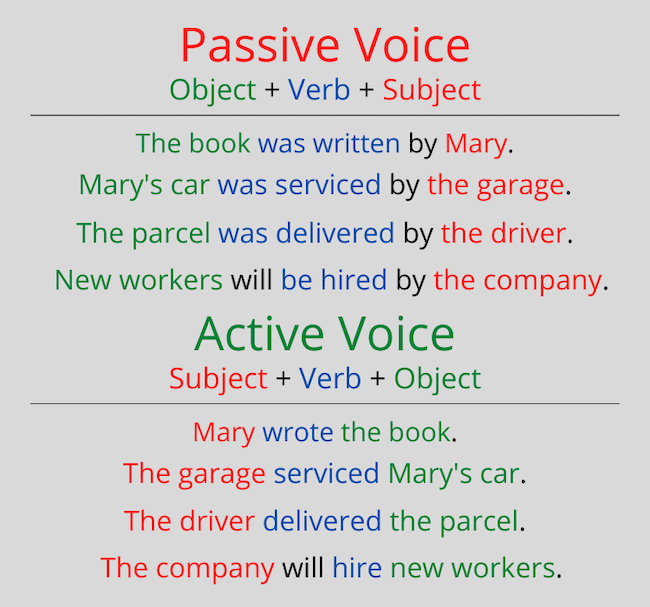

You can be sure a sentence is passive if it uses any form of the verb to be followed by a past participle.

Check out this list of irregular past participles. English has a lot of irregular past participles, however. Participle is the same as the simple past tense, and usually end in –ed, like heated, rotted, or grabbed. Past participles are past tense verb forms that are used as adjectives. The passive voice changes the position of the actor by using the verb to be along with a past participle. The passive voice can also exclude the actor entirely: The money subject was lost verb by him object & actor.The passive voice switches the subject and object so that the actor appears after the verb, as an object: My brother subject & actor lost verb the money object.The active voice matches the subject of the sentence with the actor: But any way you phrase it, the bobcat is doing the humiliating. In the active sentence, the bobcat is the subject. In both sentences, the bobcat is the actor, the person or thing that causes the action. (passive) The grizzly was humiliated by the bobcat.(active) The bobcat humiliated the grizzly.They both have their uses, and writers can choose when to use each voice.
#PASSIVE AND ACTIVE VOICE HOW TO#
You’ll learn how to identify them in your own writing in order to choose which voiceĪctive and passive voice describe two grammatically correct ways to construct a sentence. This resource explains the active and passive sentence structures, also known as voices.


 0 kommentar(er)
0 kommentar(er)
